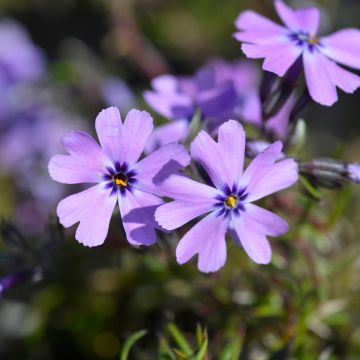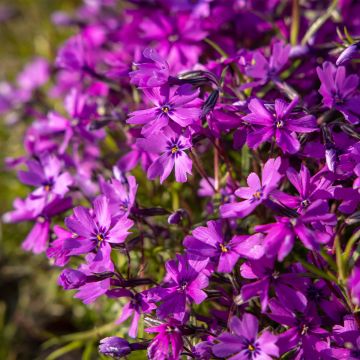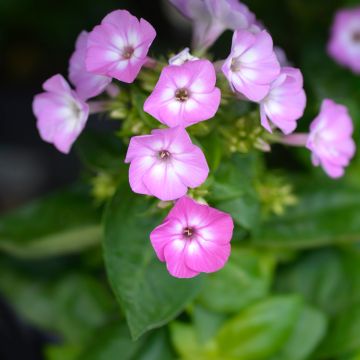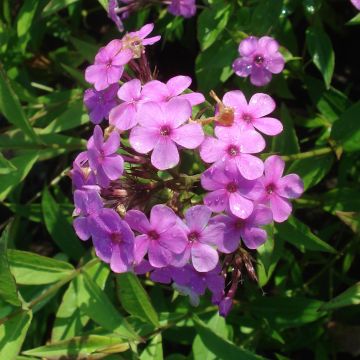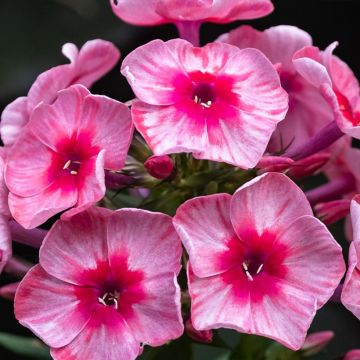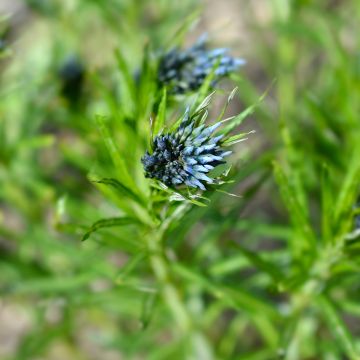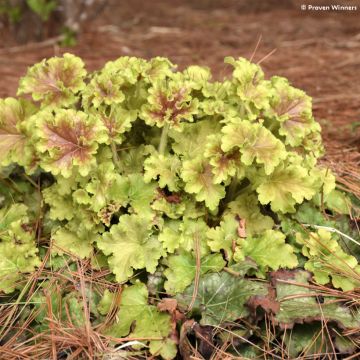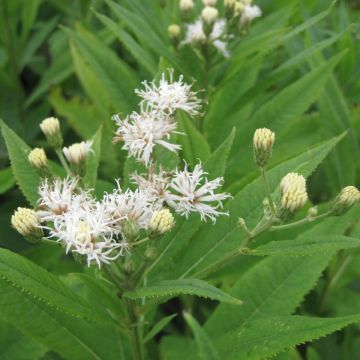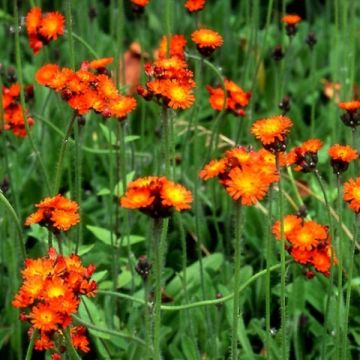Shipping country and language
Your country of residence may be:
Your country of residence is:
For a better user experience on our website, you can select:
Your shipping country:
Andorra
Austria
Belgium
Bulgaria
Canada
Chile
Croatia
Cyprus
Czechia
Denmark
Estonia
Finland
France
Germany
Greece
Hungary
Iceland
Ireland
Italy
Latvia
Lithuania
Luxembourg
Malta
Monaco
Netherlands
Poland
Portugal
Romania
Slovakia
Slovenia
Spain
Sweden
Switzerland
United Kingdom
We only deliver seed and bulb products to your country. If you add other products to your basket, they cannot be shipped.
Language:
French
German
Spanish
English
My Account
Hello
My wish lists
Plantfit
Log in / Register
Existing customer?
New customer?
Create an account to track your orders, access our customer service and, if you wish, make the most of our upcoming offers.
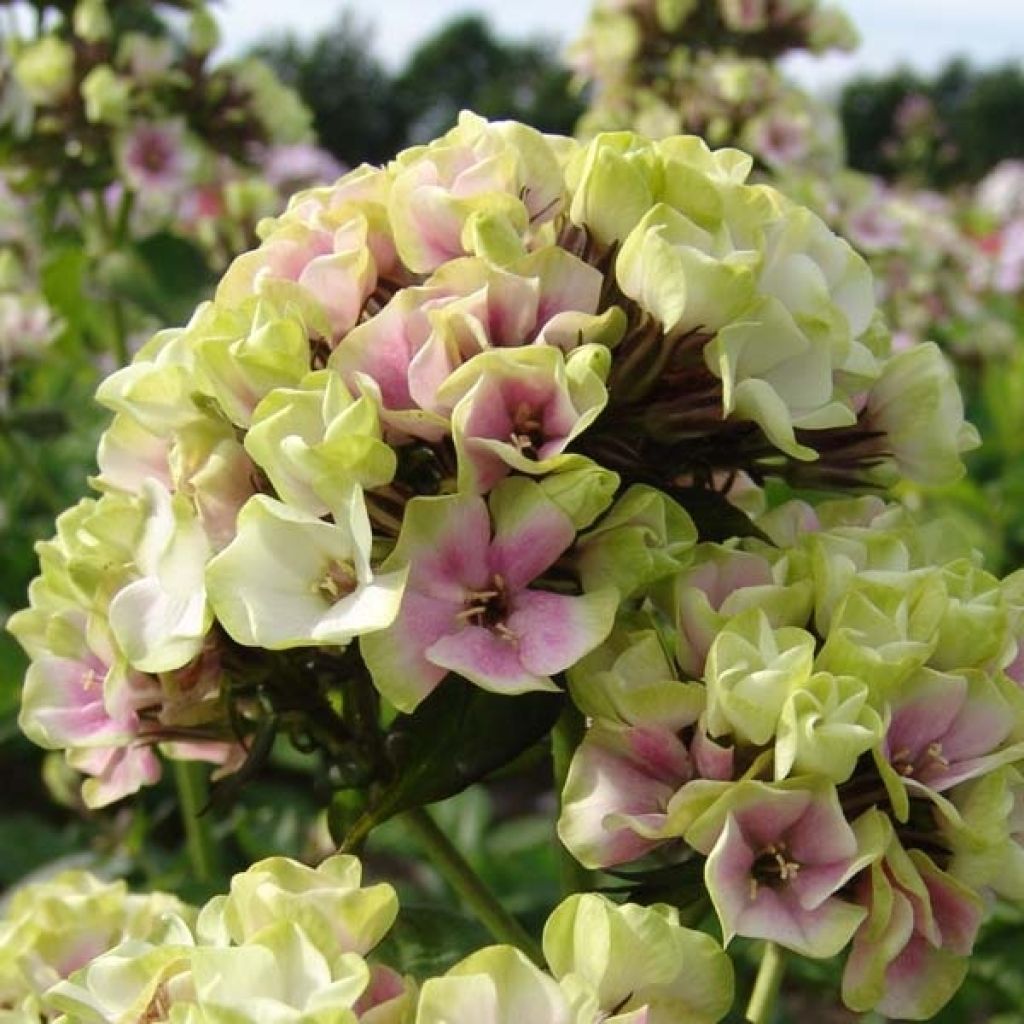

Phlox Sherbet Blend


Phlox Sherbet Blend
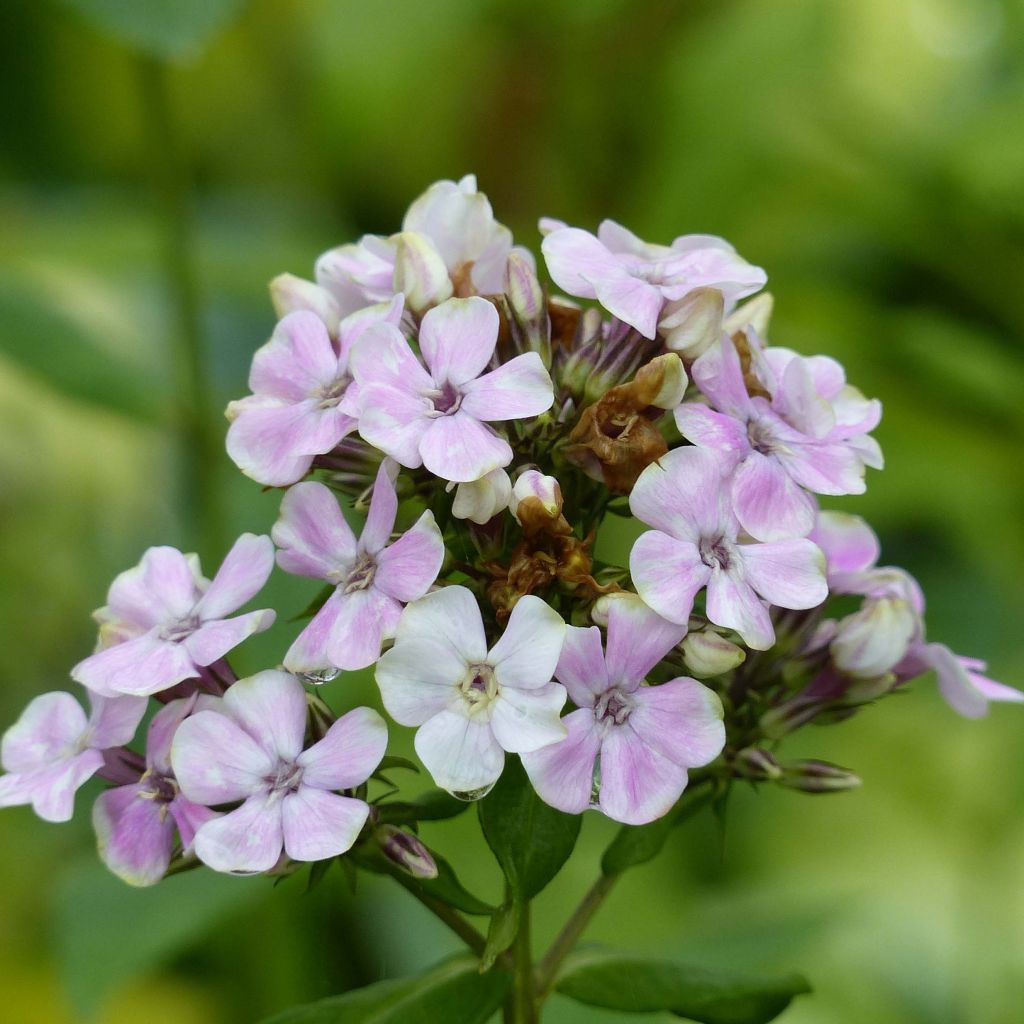

Phlox paniculata Sherbet Blend
Phlox paniculata Sherbet Blend
Phlox paniculata Sherbet Blend®
Garden Phlox, Summer Phlox, Perennial Phlox
This phlox is simply beautiful with its double tones. A marvel in a border where I mixed pink and purple.
Isabelle , 05/10/2024
Order in the next for dispatch today!
Dispatch by letter from €3.90.
Delivery charge from €5.90 Oversize package delivery charge from €6.90.
More information
This item is not available in your country.
Schedule delivery date,
and select date in basket
This plant carries a 12 months recovery warranty
More information
We guarantee the quality of our plants for a full growing cycle, and will replace at our expense any plant that fails to recover under normal climatic and planting conditions.
From €5.90 for pickup delivery and €6.90 for home delivery
Express home delivery from €8.90.
From €5.90 for pickup delivery and €6.90 for home delivery
Express home delivery from €8.90.
Does this plant fit my garden?
Set up your Plantfit profile →
Description
Phlox paniculata Sherbet Blend is a bushy phlox of modest size, but truly unusual with its flowers which have a distinct shade of yellow to them. It displays enormous clusters of yellow-green flowers in summer that emerge from yellow buds and then open into creamy, aniseed green corollas speckled with violet-pink, reminiscent of the panicles of certain hydrangeas. This compact variety can be grown in pots on the patio or in the ground in shrub or perennial beds. Its flowers are also beautiful in bouquets.
Phlox paniculata 'Sherbet Blend' belongs to the Polemoniaceae family. It is a recent variety with an upright habit, composed of leafy stems. The plant will not exceed 70 cm (28in) in height when flowering and 45 to 50 cm (18 to 20in) in width. The stems, stiff and sturdy, are covered with single, dark but vibrant green leaves, measuring about 15 to 20 cm (6 to 8in) in length. The flowering begins in July, at the height of summer, and continues until September, provided that faded inflorescences are removed. Emerging from chocolate-coloured bracts, the floral buds are yellow and open into small compound flowers with unfused petals, in an exotic mix of violet-pink, mauve, ivory, dominated by aniseed green. The slightly fragrant flowers are grouped at the tips of erect, very dense and pyramidal panicles, 12 to 15 cm (5 to 6in) in length. The flowering is nectar-rich and attracts bees.
Phlox paniculata are perennial plants commonly found in cottage gardens. Their legendary simplicity and generosity are unmatched in perennial beds. They go well with Monardas or Daisies. 'Sherbet Blend' pairs well, in a white garden, with delphiniums, roses or penstemons and works perfectly in English-style mixed borders. This Phlox can be combined with airy asters like 'Miracle Blanc' or Aster pringlei Monte Cassino, with daylilies in the same tone, or with roses 'Jacqueline du Pré' or 'Boule de Neige'. The flower bed can be punctuated with silver or grey foliage: Artemisia, Cinerarias, Stachys or silver baskets. The 'Sherbet Blend' Phlox is a top-notch variety for planting in pots and creating bouquets.
Phlox paniculata Sherbet Blend in pictures
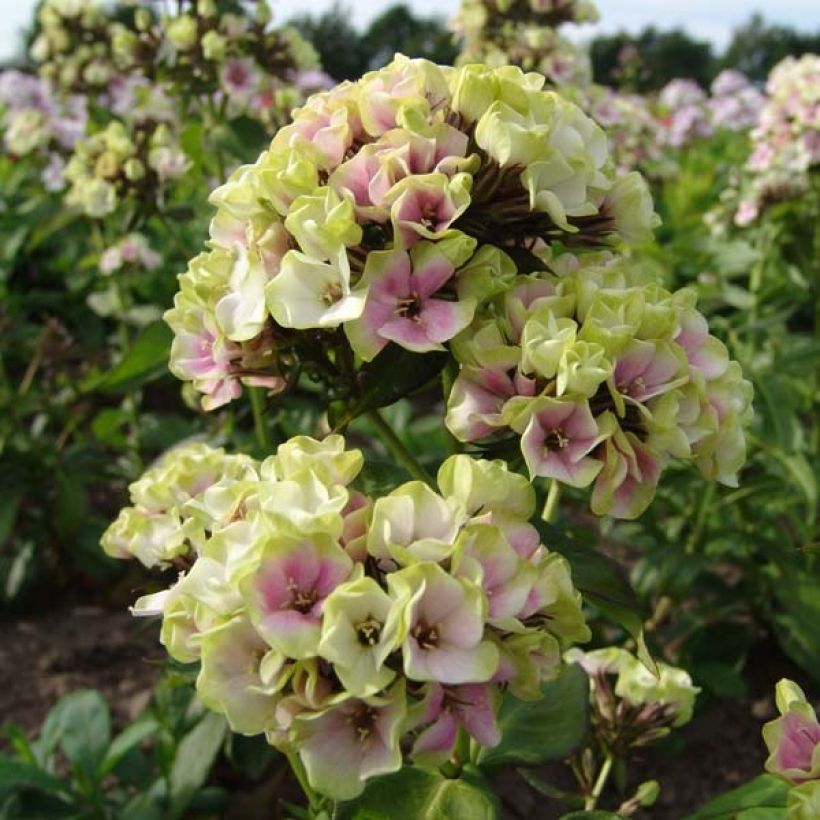



Flowering
Foliage
Plant habit
Botanical data
Phlox
paniculata
Sherbet Blend®
Polemoniaceae
Garden Phlox, Summer Phlox, Perennial Phlox
Cultivar or hybrid
Other Phlox
Planting and care
Plant in full sun or partial shade - phlox are more comfortable in a damp climate in summer, especially at night. Choose a rich and well-drained soil, which you have deeply loosened, as the phlox Sherbet Blend does not like competition with others. Stake if necessary, the stems can bend under the weight of the leaves. Prune the flowers when they have faded, in order to prolong the flowering period. Phlox is sensitive to powdery mildew; even though Sherbet Blend is one of the most resistant varieties, make sure to maintain regular watering in summer as a preventive measure, and monitor for its possible appearance for early treatment.
Planting period
Intended location
Care
- , onOrder confirmed
Reply from on Promesse de fleurs
Summer flowering perennials
Haven't found what you were looking for?
Hardiness is the lowest winter temperature a plant can endure without suffering serious damage or even dying. However, hardiness is affected by location (a sheltered area, such as a patio), protection (winter cover) and soil type (hardiness is improved by well-drained soil).

Photo Sharing Terms & Conditions
In order to encourage gardeners to interact and share their experiences, Promesse de fleurs offers various media enabling content to be uploaded onto its Site - in particular via the ‘Photo sharing’ module.
The User agrees to refrain from:
- Posting any content that is illegal, prejudicial, insulting, racist, inciteful to hatred, revisionist, contrary to public decency, that infringes on privacy or on the privacy rights of third parties, in particular the publicity rights of persons and goods, intellectual property rights, or the right to privacy.
- Submitting content on behalf of a third party;
- Impersonate the identity of a third party and/or publish any personal information about a third party;
In general, the User undertakes to refrain from any unethical behaviour.
All Content (in particular text, comments, files, images, photos, videos, creative works, etc.), which may be subject to property or intellectual property rights, image or other private rights, shall remain the property of the User, subject to the limited rights granted by the terms of the licence granted by Promesse de fleurs as stated below. Users are at liberty to publish or not to publish such Content on the Site, notably via the ‘Photo Sharing’ facility, and accept that this Content shall be made public and freely accessible, notably on the Internet.
Users further acknowledge, undertake to have ,and guarantee that they hold all necessary rights and permissions to publish such material on the Site, in particular with regard to the legislation in force pertaining to any privacy, property, intellectual property, image, or contractual rights, or rights of any other nature. By publishing such Content on the Site, Users acknowledge accepting full liability as publishers of the Content within the meaning of the law, and grant Promesse de fleurs, free of charge, an inclusive, worldwide licence for the said Content for the entire duration of its publication, including all reproduction, representation, up/downloading, displaying, performing, transmission, and storage rights.
Users also grant permission for their name to be linked to the Content and accept that this link may not always be made available.
By engaging in posting material, Users consent to their Content becoming automatically accessible on the Internet, in particular on other sites and/or blogs and/or web pages of the Promesse de fleurs site, including in particular social pages and the Promesse de fleurs catalogue.
Users may secure the removal of entrusted content free of charge by issuing a simple request via our contact form.
The flowering period indicated on our website applies to countries and regions located in USDA zone 8 (France, the United Kingdom, Ireland, the Netherlands, etc.)
It will vary according to where you live:
- In zones 9 to 10 (Italy, Spain, Greece, etc.), flowering will occur about 2 to 4 weeks earlier.
- In zones 6 to 7 (Germany, Poland, Slovenia, and lower mountainous regions), flowering will be delayed by 2 to 3 weeks.
- In zone 5 (Central Europe, Scandinavia), blooming will be delayed by 3 to 5 weeks.
In temperate climates, pruning of spring-flowering shrubs (forsythia, spireas, etc.) should be done just after flowering.
Pruning of summer-flowering shrubs (Indian Lilac, Perovskia, etc.) can be done in winter or spring.
In cold regions as well as with frost-sensitive plants, avoid pruning too early when severe frosts may still occur.
The planting period indicated on our website applies to countries and regions located in USDA zone 8 (France, United Kingdom, Ireland, Netherlands).
It will vary according to where you live:
- In Mediterranean zones (Marseille, Madrid, Milan, etc.), autumn and winter are the best planting periods.
- In continental zones (Strasbourg, Munich, Vienna, etc.), delay planting by 2 to 3 weeks in spring and bring it forward by 2 to 4 weeks in autumn.
- In mountainous regions (the Alps, Pyrenees, Carpathians, etc.), it is best to plant in late spring (May-June) or late summer (August-September).
The harvesting period indicated on our website applies to countries and regions in USDA zone 8 (France, England, Ireland, the Netherlands).
In colder areas (Scandinavia, Poland, Austria...) fruit and vegetable harvests are likely to be delayed by 3-4 weeks.
In warmer areas (Italy, Spain, Greece, etc.), harvesting will probably take place earlier, depending on weather conditions.
The sowing periods indicated on our website apply to countries and regions within USDA Zone 8 (France, UK, Ireland, Netherlands).
In colder areas (Scandinavia, Poland, Austria...), delay any outdoor sowing by 3-4 weeks, or sow under glass.
In warmer climes (Italy, Spain, Greece, etc.), bring outdoor sowing forward by a few weeks.
